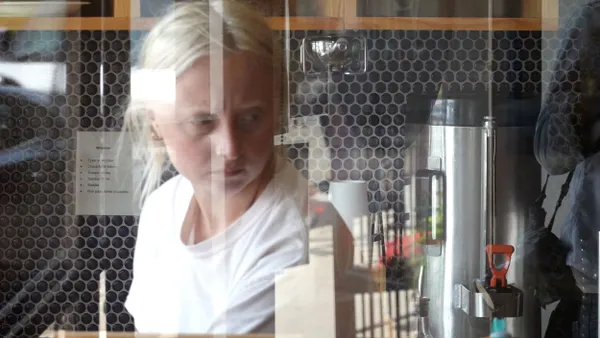Flexible work has unquestionably been a game-changer. As an operating model, it also comes with an inherent danger of breeding inconsistent employee experience. After all, promoting a cohesive and inclusive company culture is that much more difficult when team members are scattered across different locations and adhere to different schedules. We’ve seen plenty of evidence during this current shift toward hybrid work that when team members are isolated physically, disconnection often crops up. So when it comes to evolving flex-forward culture, caring for belonging and connectivity are essential.
As of 2022, 52% of workers said they were considering a switch to remote or hybrid work in the year ahead. To course-correct the uneven employee experiences that can be a byproduct of mixing remote and in-person work, organizations can look for ways to create shared employee experiences. These are moments, touchpoints, and aspects of culture that are experienced universally and are implemented in a fair and equal way. (Note, these are separate from macro equity concerns such as pay parity and DEI issues.) Read on to learn how to connect hybrid team members in more equitable ways.
What are shared experiences and why do they matter?
There’s the actual work, and then there are the rest of the individual experiences we each have at work (whether in the office or logging in from home) every day. Those “soft” aspects of organizational culture are, of course, some of the most impactful in forming our opinions about our work lives. Shared experiences are about calibrating those experiences to be more consistent, avoiding putting some people at a disadvantage, as well as allowing space for individual preferences and working styles. (Learn more about equitable experiences.)
A few examples of equitably shared experiences in practice:
- Making sure office meeting rooms facilitate remote participants
- A documented and distributed flexible work policy for all, with priority working hours and FAQs
- Internal comms software that helps keep employees looped in as a company-wide team, from essential updates to relationship-building and recognition
With the percentage of engaged workers down to 34% in 2022, it’s no wonder that 79% of organizations have said that fostering a sense of belonging in the workforce is important to their near-term success, and 93% agreed that a sense of belonging drives organizational performance. To this end, creating and fostering equitably shared experiences can help transform individual employee experience—making people feel more included and generally on the same page means more engagement, which positively impacts a slew of business outcomes.
In what areas are shared experiences often missing?
Inconsistent daily experiences are easy to pinpoint; we’ve all grumbled about disconnects, “unfair” discrepancies, and feeling “lost” within certain parts of the workday. Zero in on the micro-experiences that can feel disjointed because of how colleagues are set up differently within a distributed-team context. These hybrid-life inequities frequently fall into one of the following categories (as broken down in this white paper on the topic):
- Connecting with coworkers: 43% of business leaders say relationship-building activities are the number-one challenge of hybrid operations.
- Collaboration capabilities: 73% of employees say that collaboration takes more effort and planning today.
- Career opportunity and recognition: 41% of US executives have said that remote employees would be less likely to be considered for promotion.
- Accommodations and accessibility: 41% of employees say they’d come into the office for “access to tools, tech or spaces” they don’t have at home.
Making employee experiences more equitable
The challenge of extending company culture consistently across distributed employees can feel overwhelming. Try addressing obvious pain points first, and brainstorm how to make those everyday work experiences more collective, more equitable, and more universal. Rather than prioritizing in-office workers or remote workers first, seek out solutions that are location-flexible or agnostic. Consider how to run employee events, provide rewards and amenities, and build out functional infrastructure to account for everyone, even if that means offering several options.
For inspiration, check out how industry-leading businesses have tackled hybrid culture gaps.
In the long run, centering equitable experiences for hybrid teams—from equal access to tools to policies that help folks engage, whatever their working style—will offer employees equal footing in their day-to-day work experience. Consider that sense of inclusion, fairness, and security an engagement power tool.










